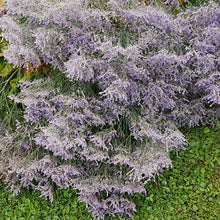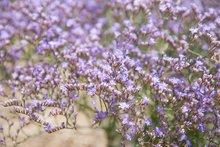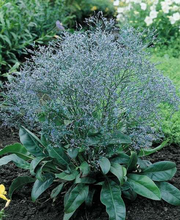Height: 29 inches
Spacing: 18 inches
Sunlight: Full Sun
Hardiness Zone: 3a
Other Names: Statice
Ornamental Features
Sea Lavender features airy plumes of lavender flowers at the ends of the stems from mid to late summer. The flowers are excellent for cutting. Its oval leaves remain dark green in colour throughout the season. The fruit is not ornamentally significant.
Landscape Attributes
Sea Lavender is a dense herbaceous perennial with tall flower stalks held atop a low mound of foliage. Its medium texture blends into the garden, but can always be balanced by a couple of finer or coarser plants for an effective composition.
This is a relatively low maintenance plant, and is best cleaned up in early spring before it resumes active growth for the season. It is a good choice for attracting butterflies to your yard, but is not particularly attractive to deer who tend to leave it alone in favor of tastier treats. It has no significant negative characteristics.
Sea Lavender is recommended for the following landscape applications;
- Mass Planting
- General Garden Use
Planting & Growing
Sea Lavender will grow to be about 29 inches tall at maturity, with a spread of 29 inches. When grown in masses or used as a bedding plant, individual plants should be spaced approximately 18 inches apart. Its foliage tends to remain dense right to the ground, not requiring facer plants in front. It grows at a medium rate, and under ideal conditions can be expected to live for approximately 15 years.
This plant should only be grown in full sunlight. It prefers dry to average moisture levels with very well-drained soil, and will often die in standing water. It is not particular as to soil pH, but grows best in sandy soils, and is able to handle environmental salt. It is somewhat tolerant of urban pollution. This species is not originally from North America. It can be propagated by seed.





